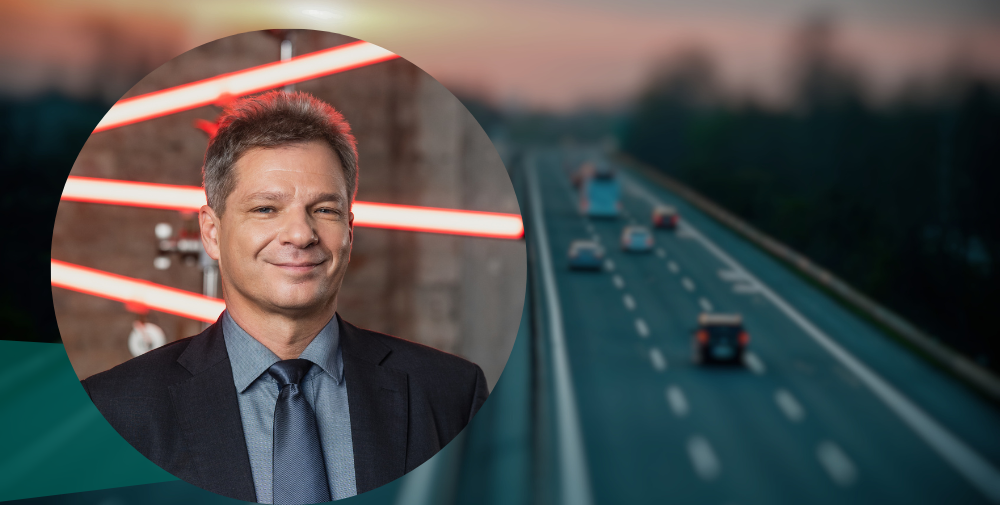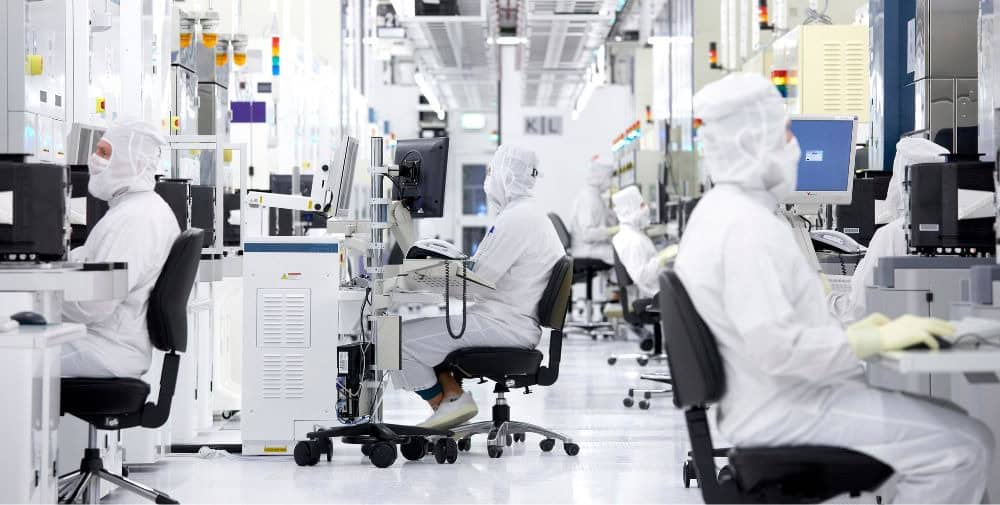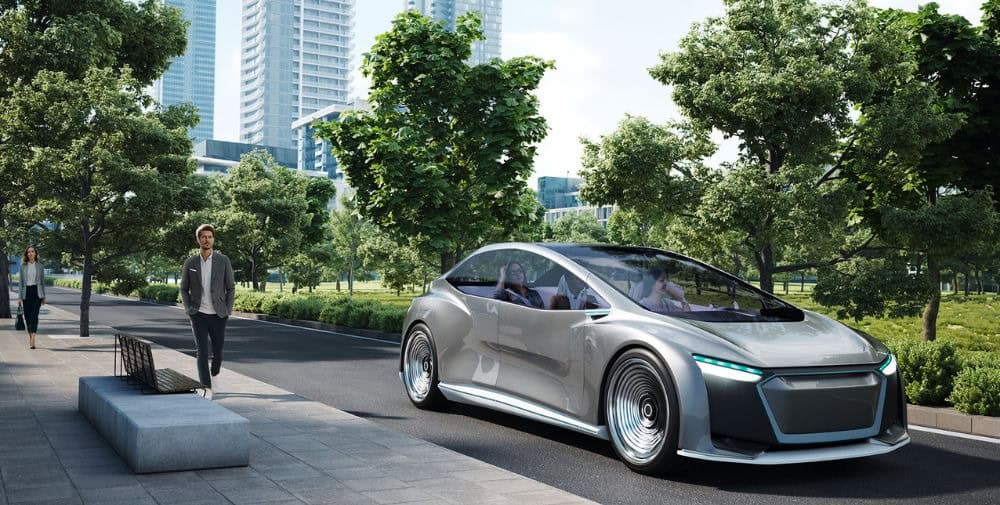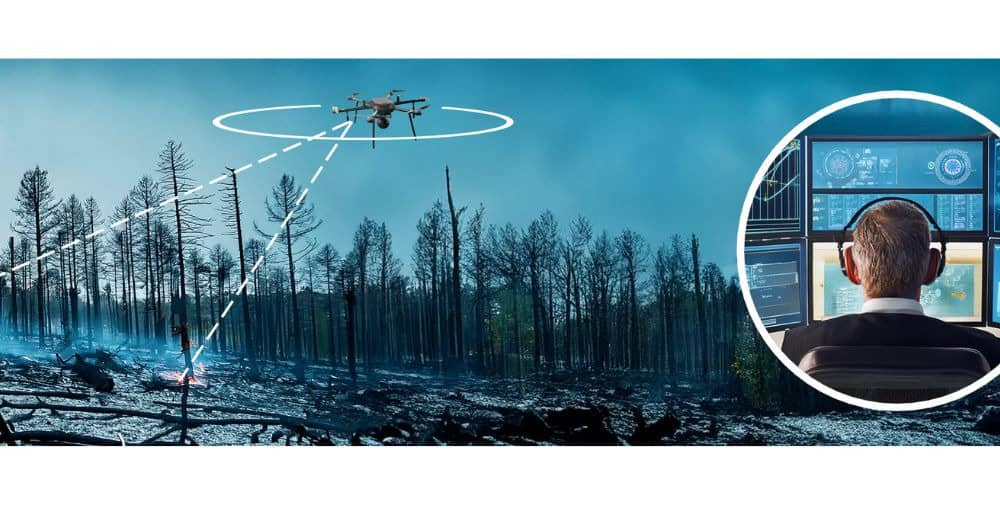Prof. Michler, what are the greatest challenges currently facing mobility research?
Clearly, automated driving in urban and suburban areas. The task here is to establish the information technology and infrastructure foundations as quickly as possible. We are therefore actively working on technological solutions to enable automated driving and, in this context, also to demonstrate the complexity we are facing and the implementation timeframes.
What does your professorship deal with in this context?
We are primarily concerned with intermodal traffic information systems, i.e. topics such as networking and localization as well as sensing.
Our research is based on three pillars. In the first step, we perform PC-based radio and signal simulation using electrical 3D models. In the second step, we generate or emulate – based on models – live signals in special laboratory environments such as our anechoic chamber. This also involves interaction with system components from infrastructure and vehicles. In the third step, we test and analyze them in live tests in our various test fields. This last step is particularly exciting and important in order to collect real data, i.e., the data that is generated on rail, aircraft, inland waterways, or on the road, in order to use it again in the modeling, i.e., in step 1.
You have now addressed several application areas of your research. Which are the most important here?
Our research extends across all modes of transport. Corresponding projects from the areas of rail, for example the intelligent freight car, from aviation, here for example the aircraft cabin of the future, inland navigation with intelligent locks, and of course automotive with the challenging automation topics from the road to the parking garage. That sounds like a lot at first, but you have to see that the topics of communication and positioning connect all the research projects. In terms of data communication in general or in systemic components in particular, about 80 percent of our projects are always the same. Only 20 percent are actually mode-specific.
What else distinguishes your research?
A special feature is the close interaction with industry. The practical orientation of our projects is also reflected in the numerous spin-offs that we have co-supported or still support, including Zigpos, Metirionic and aeroLiF.
Another special feature is that we work with technologies that already exist and that we test for robustness, suitability and potential for improvement. We basically work with different but combinable basic technologies, characterized by bandwidth, frequency range, etc., and use raw data that can still be used when a technology is commercialized or converted.
This makes our approaches technologically open and very efficient in terms of costs.
At the same time, we are doing preliminary research. This means, of course, that we also try to incorporate innovative or revolutionary technologies that are still in the application phase but have great potential for use. 5G is one example of this. We were already working with proprietary broadband technologies ten years ago. The standard, i.e. 5G, came later, but what is possible with 5G in the context of positioning or 6G in the context of sensing, we were already able to do with our proprietary systems in terms of software technology about ten years ago.
In addition to 5G, ultra-wideband (UWB) is a good example of this. This technology is now installed in smartphones and thus costs only one to two-digit euros. Originally, however, a chipset in evaluation platforms once cost up to three-digit amounts.
Our goal is always to have the software and the technologically prepared raw data in simulation, emulation or from evaluation systems. If the technology then follows suit in terms of standardization, we still arrive at almost the same results or qualities with the framework we have created.
What is the next promising enabling technology here that you are already working with?
We are currently doing a lot of work on modulated light as a transmission and positioning medium, for example light as a robust redundant communication channel between vehicles in platooning, or also between vehicles and infrastructure, where, for example, cost-effective communication channels are created via modulated LEDs in traffic signals at intersections, and if you ask me, this will be the technological future.
Light is standardized and there are chipsets that can already transmit a gigabit of data between LED light and an LED receiver over distances in the double-digit meter range.
Light is currently still a new approach to transportation, but it has great potential. Why?
Because road traffic offers numerous light sources anyway.
Every traffic light, every headlight, every lamppost can basically be a landmark, i.e. an orientation point for localization, in addition to an access point for communication. I’m absolutely certain that at some point even large companies in the transportation sector, such as Siemens, will realize that there’s a new market attached to this.
When that happens, we will have standardized raw data signals for the systems we are testing now, which – with minor adjustments to the framework – will fit our open-technology research approaches.
Another example is our radiating antenna cables, called LCX, which are specially adapted to traffic engineering requirements. We use these in particularly difficult supply areas, such as tunnels, parking garages, but also in the aircraft cabin, where there are communication supply bottlenecks and also no GPS signals. These longitudinally dominant, open-technology antennas, which can also be used in guard rails, for example, ensure lane selectivity by means of special signal processing and could thus replace a whole range of sensors in the future. At the moment, this is still complex and expensive for the initial installation, but I am sure that this technology will be very relevant in the future.
What role do test fields play in this context and which test field is currently the most exciting from your point of view?
First and foremost, they are important for collecting real data, which in turn is relevant for evaluation and further research. For this purpose, there are test sites in real environments and those that are set up exclusively for testing and verification purposes. The first category includes, for example, the suburban “Test and Pilot Track for Intelligent Traffic Systems and Automated Driving” on the B170 in the south of Dresden. The key objective here is to support connected driving. To this end, we are tapping the potential of new technologies that can improve traffic safety and efficiency.
The second category, i.e., the non-public test fields, includes, for example, the Smart Mobility Lab (SML), an EU research project of the TU Dresden, which is currently being built in Hoyerswerda. In the future, the networking between driving, flying and robotics can be tested and even certified here. This is extremely exciting not only for road traffic, but also for applications in the industrial sector, for example in logistics.
What are the current obstacles to fully automated traffic?
It has to be said that situational autonomous driving on highways would in principle already be possible today. The car I drive privately has Level 3 automation, which means that I have to be able to take over the steering wheel spontaneously at any time.
With Level 3, I could take my hands off the wheel almost continuously on an exclusive, sensible left lane at target speeds of up to 130 km/h from Dresden to Munich. In urban areas, this is still utopia.
The reason for this is mixed traffic. Because a standard vehicle but also a bicycle or a vintage car have no networking, no laser or radar.
But aside from that, the systems are not yet safe enough either. If we drove at a maximum of 20 to 30 km/h in city traffic, they could already react faster to children, balls or unforeseen events than humans can. But at higher speeds, such as 50 km/h, this is only possible for physical reasons in terms of braking distance with full networking with Vehicle2X communication and environmental sensors such as lidar, radar, camera, etc., and that is simply too expensive at the moment.
In addition, for fully automated driving, highly available, secure signal paths are needed between the vehicles. This requires redundant transmission channels with quality monitoring. We call this “integrity.
In addition, different sensor data must always support each other for sufficient safety. This so-called data fusion is not only there to achieve better data quality or resolution, but above all to achieve safety and high reliability. In bad weather conditions such as fog, snowfall, but often also simply in darkness, optical sensors such as camera or lidar are prone to errors due to light attenuation with weak signal reception, for example. Physical redundancy here means remaining operational with weather-independent sensors such as radar systems but also inertial systems.
Apart from bad weather conditions: Which areas of traffic currently pose the greatest challenges?
Tunnels and parking garages, for example. Since connected driving doesn’t end outdoors, some of our test areas are located right here. Due to non-existent or only weak radio signals, communication and localization are difficult in these areas. In addition, the numerous reflective walls but also the neighboring vehicles pose major challenges. We are also trying to solve these application domains with radio support and are relying on broadband communication carriers such as 5G or UWB, with which we can then simultaneously implement positioning or tracking and environment detection. But we are also testing the radiating antenna cable solutions already mentioned as optimization components in this context.
E-car, air cab or cargo bike: How would you prefer to get around in urban traffic in the future?
I currently drive an e-car on business and get along very well with it in city traffic. Now, however, the urban space is becoming more and more confined and the space on the road is limited. In China, we are already moving into the third dimension here and have much more freedom. That’s why my vision is what I call an “intermodal vehicle” that combines private transport with public transport, i.e. a lane-guided transport system. This would also solve the problem of the last mile, for example. In my opinion, e-mobility is not yet the ideal solution for the highway because the high vehicle weight due to the battery and the resulting limited range are the bottleneck. That’s why the development of an electric-friendly infrastructure with suitable services such as reserving charging points or creating prioritized traffic areas is still an exciting topic that we should devote ourselves to in terms of resource efficiency, even if it is less in focus politically than automated driving, especially under urban conditions.
_ _ _ _ _
Our interview partner
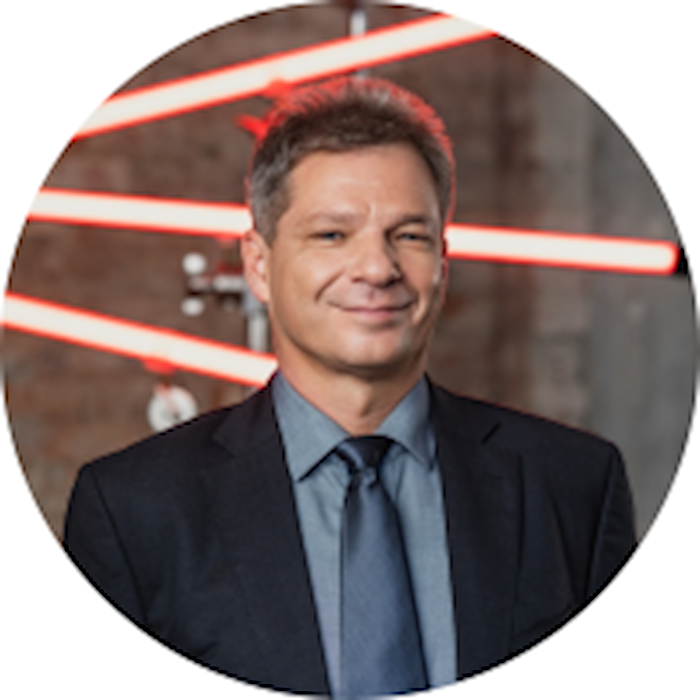
Prof. Dr.-Ing. Oliver Michler,
Professor, TU Dresden, Faculty of Transportation Sciences
_ _ _ _ _
Professorship for Information Technology for Traffic Systems
The Chair “Informationstechnik für Verkehrssysteme” (engl. information technology for traffic systems) which is part of the faculty of traffic science “Friedrich List” of the TU Dresden is concerned with apprenticeship and research in the topic of traffic information systems. Those systems are the technical foundation of application-oriented traffic telematic services which serve the informational interconnection of driveway, vehicle and vehicle operation.
Secretary: Cornelia Metál
E-mail: cornelia.metal@tu-dresden.de
Phone: +49 351 463-36781
Gerhart Potthoff Building (House 2)
Hettnerstraße 3,
01069 Dresden
Room POT 365a
👉 To the chair’s website
_ _ _ _ _
Further Links
👉 Zigpos
👉 Metirionic
